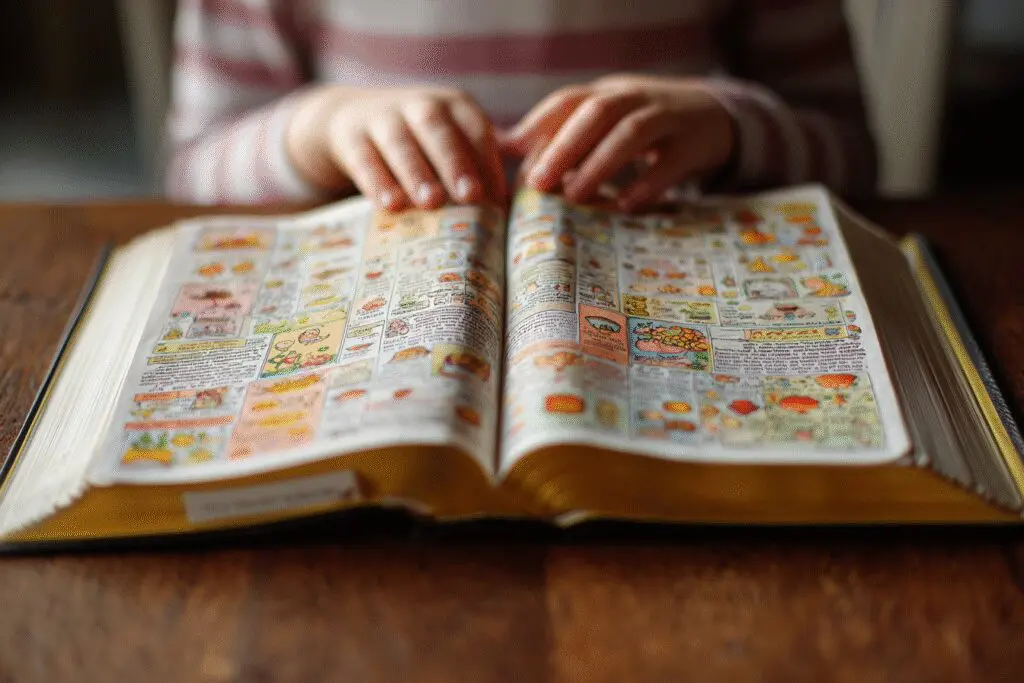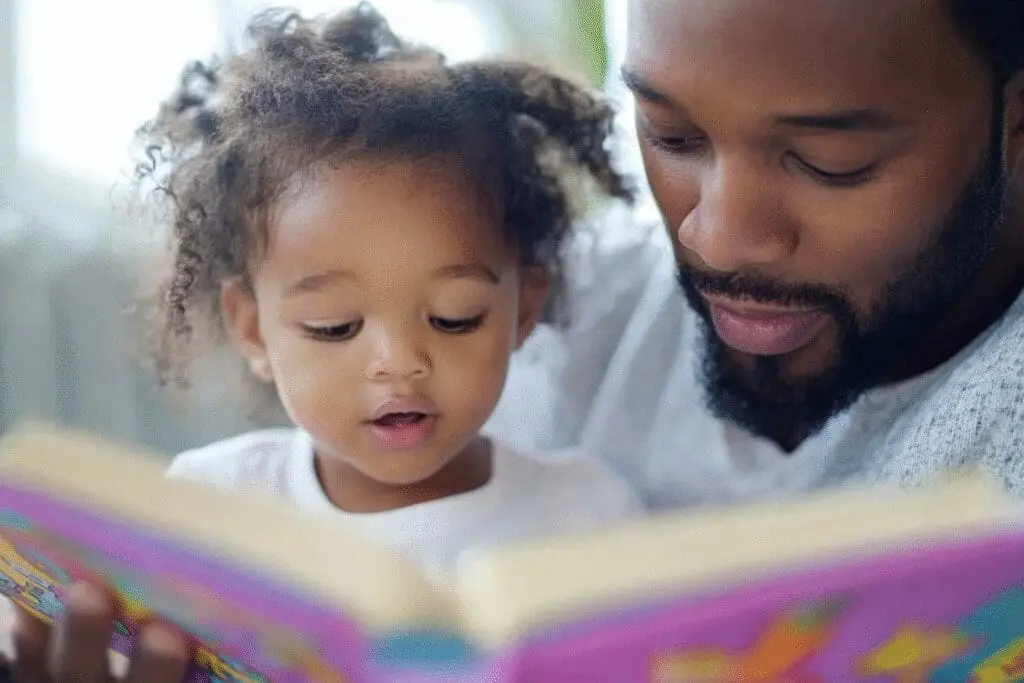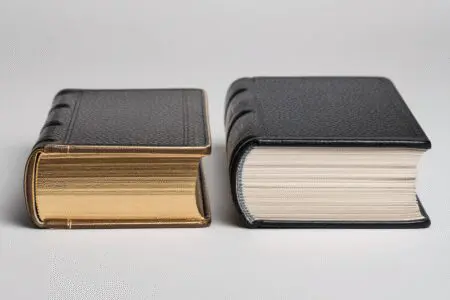I still remember the feeling. Standing in the aisle of our local Christian bookstore, staring at a wall of Bibles. There were Bibles with cartoon characters, Bibles with sparkly covers, and Bibles that looked like ancient, serious texts. My son was just getting old enough to read on his own, and I felt a huge responsibility. I wanted to give him the Word of God, but I also wanted him to actually read it. The question echoed in my mind, a question I’m sure you’ve asked yourself: What Bible version is best for kids?
It felt overwhelming. Honestly, for a moment, I just wanted to grab the one with the coolest-looking cover and call it a day. But I knew it was more important than that. This wasn’t just about buying a book; it was about opening a door for my child to meet Jesus through His Word.
If you’re feeling that same mix of hope and confusion, take a deep breath. You’re in the right place. This guide is for you. It’s not a list of rules. Instead, think of it as a conversation with a friend who has walked this path, made some mistakes, and learned a lot along the way. We’re going to figure this out together.
More in Bible Category
What Bible Does the Orthodox Church Use
What Extra Books Are in the Catholic Bible
Key Takeaways
- There is no single “best” Bible for every child. The right choice depends entirely on your child’s age, reading level, and personality.
- Start with engagement, not perfection. For young children, a colorful storybook Bible is a wonderful first step to build familiarity and love for God’s stories.
- Match the translation to their understanding. Move from storybook Bibles to paraphrased versions (like the NIrV) and then to more literal translations (like the NIV or CSB) as they grow.
- Look beyond the text. Features like illustrations, font size, devotionals, and even the cover can make a huge difference in keeping a child interested.
- The goal is a relationship, not just reading. Your involvement is the most crucial ingredient. Reading together and talking about the stories will shape their faith far more than any specific version.
Why Can’t My Child Just Read My Bible?
This is a fair question! Many of us grew up with one family Bible, often a beautiful, leather-bound King James Version, sitting on the coffee table. It seems simpler to just share the version you know and love.
I tried this at first. I opened my own well-worn NIV and started reading to my six-year-old. After about two minutes of genealogies in Genesis, I saw his eyes glaze over. He was trying to be patient, but he was lost. And I couldn’t blame him.
The truth is, most Bibles written for adults are simply not a good fit for children. There are a few key reasons for this.
Is the Reading Level Too High?
First, the reading level is a major hurdle. Even a modern translation like the NIV is written at roughly a 7th-grade reading level. The King James Version? That’s closer to a 12th-grade level. Handing that to an early reader is like asking them to run a marathon before they’ve learned to walk. It leads to frustration, not faith. They get bogged down in complex sentence structures and vocabulary they don’t understand.
Are the Concepts Too Abstract?
Second, adult Bibles deal with deeply abstract theological concepts. Think about explaining sanctification, justification, or the atonement to a seven-year-old. It’s tough! Children are concrete thinkers. They need stories they can see and characters they can relate to. A good children’s Bible presents the core truths of the faith through the narratives that make them accessible.
What About Their Attention Span?
Finally, let’s be honest about attention spans. A typical chapter in an adult Bible can be a long journey for a little one. Children’s Bibles are designed with this in mind. They often have shorter sections, engaging illustrations, and interactive elements that keep kids focused and wanting to see what happens next. The goal is to make opening the Bible an exciting and positive experience.
What Are the Different Types of Bibles for Children?
Once you realize a special Bible for your child is the way to go, the next step is understanding the options. It’s not as complicated as it looks. Most Bibles for kids fall into one of three main categories.
Storybook Bibles: Are They a Good Starting Point for Toddlers?
Storybook Bibles are the perfect entry point into God’s Word for the youngest children, typically from birth to about age five. These aren’t full Bibles. Instead, they retell the major stories of Scripture in simple, engaging language, almost always paired with beautiful, vibrant illustrations.
I think of these as building the “scaffolding” of faith. They introduce your child to the main characters—Noah, Moses, David, and of course, Jesus. They learn the flow of God’s big story, from creation to the cross and resurrection.
There are some things to keep in mind, however.
- Pros of Storybook Bibles:
- Highly Engaging: The pictures and simple text capture a young child’s attention.
- Builds Familiarity: They make the Bible feel like a friendly, accessible book.
- Focuses on the Narrative: They beautifully communicate the foundational stories of our faith.
- Durable: Many are board books that can withstand toddler life!
- Cons of Storybook Bibles:
- Not Scripture: The text is a retelling, not a direct translation.
- Incomplete: They only include a selection of the most popular stories.
Don’t let the cons scare you. A storybook Bible is an incredible tool for instilling a love for God’s Word from the very beginning. It’s the first step on a lifelong journey.
Paraphrased Bibles: How Do They Help Early Readers?
When your child starts reading on their own, a paraphrased Bible is often the perfect next step. This type of Bible focuses on conveying the original thought or idea behind the text rather than providing a strict word-for-word translation. The goal is maximum readability and comprehension for a young reader.
The most popular and respected version in this category is the New International Reader’s Version (NIrV). It’s based on the New International Version (NIV) but uses shorter sentences and simpler words, bringing the reading level down to about 3rd grade.
This is the kind of Bible that can make a child feel successful. They can open it, read a passage, and actually understand what it means. This builds confidence and encourages them to read more on their own. It helps them transition from having stories read to them to reading God’s Word for themselves.
Literal Translations: When Is My Child Ready for a “Real” Bible?
As your child moves into the preteen years (around ages 9-12), they may be ready for a Bible that uses a more literal, word-for-word translation philosophy. These Bibles try to stick as closely as possible to the original Hebrew and Greek text.
This doesn’t mean they are hard to read! Many modern literal translations are excellent for strong young readers.
- New International Version (NIV): Probably the most popular version in the world. It balances accuracy with readability very well.
- Christian Standard Bible (CSB): A newer translation that is highly respected for its accuracy and smooth reading style.
- New Living Translation (NLT): This one sits somewhere between a paraphrase and a literal translation, but it’s a fantastic option for kids who want a full Bible that is very easy to understand.
This is the stage where you can introduce them to a “real” study Bible designed for kids, with maps, timelines, and notes that help explain the context. This is a big step, and it’s exciting! It’s the moment they get a Bible that can serve them well into their teen years.
How Do I Choose the Right Bible for My Child’s Age?
Knowing the types is one thing, but matching it to your child is the key. Every child is different, but here are some general guidelines that have helped many parents, including me.
For Ages 0-4: What Should I Look for in a Toddler’s First Bible?
For this age, think sensory. You are building positive feelings and familiarity. The Bible should be a source of comfort and joy.
- Durability is a must. Look for sturdy board books that can handle being chewed on, dropped, and loved intensely.
- Illustrations are everything. You want bright, colorful, and friendly pictures that draw your child into the story.
- The text should be minimal. We’re talking one or two short, simple sentences per page.
- Focus on the core stories. Look for Bibles that feature Creation, Noah’s Ark, David and Goliath, the birth of Jesus, and the resurrection.
This is about cuddling up on the couch together and pointing to the pictures. It’s about making “Bible time” a warm and happy part of their day.
For Ages 5-8: Which Bibles Bridge the Gap from Pictures to Text?
This is a transitional age. They are moving from being listeners to being readers. Their Bible should reflect that. This is the sweet spot for a version like the NIrV.
You want a Bible that still has plenty of illustrations to keep them visually engaged, but with more of the actual biblical text. The stories will be more detailed than in their toddler Bible. You can start reading a few verses or a short chapter each night.
This is also a great age to find Bibles that are themed around their interests, like an adventure Bible or a princess Bible. Some parents shy away from these, but I say if it gets your child excited to open the Word of God, go for it!
For Ages 9-12: Is My Preteen Ready for a Full-Text Bible?
By this age, many kids are ready to graduate to a full-text Bible. They are starting to ask deeper questions and can handle more complex ideas. Understanding the different stages of child literacy is incredibly helpful here. For parents who want to dive deeper into this, research from educational institutions, such as the comprehensive resources on literacy development from Vanderbilt University’s Peabody College, can provide valuable context.
This is the time to look at an NIV, CSB, or NLT study Bible for kids. These are amazing resources. They often include:
- Book introductions: Explaining who wrote the book and why.
- Helpful notes: Defining tricky words or explaining cultural context.
- Character profiles: Highlighting key people in the Bible.
- Maps and charts: Helping them visualize the world of the Bible.
- Devotional sections: Applying the Bible’s lessons to their own lives.
The goal here is to give them a Bible they can grow with. You want a tool that not only gives them the text but also teaches them how to study it for themselves.
What Features Should I Consider Beyond the Translation Itself?
The text is the most important part, but it’s not the only thing to consider. The “packaging” can make a world of difference for a child.
Does the Cover and Design Really Matter?
For a child? Absolutely! An appealing cover makes a child feel like the Bible is truly theirs. It’s not just another book on the shelf; it’s a special gift. Let them have some input! If they love a particular color or style, it will make them more likely to pick it up.
Are Study Notes and Devotionals Helpful or Distracting?
For older kids (ages 9 and up), they are incredibly helpful. They act like a friendly guide, answering questions that pop up as they read. They help bridge the gap between the ancient world and your child’s world today. For younger kids, however, they can be too distracting. You want their focus to be on the main story, so a simpler layout is usually better.
How Important is Font Size and Readability?
This is a huge deal. Open the Bible and look at the pages. Is the text cramped? Is the font tiny? A Bible with a slightly larger font and more white space on the page is much less intimidating for a young reader. It makes the task of reading feel more manageable and enjoyable. It’s a small detail that has a big impact on their experience.
How Can I Introduce the Bible to My Child Without It Feeling Like a Chore?
This might be the most important question of all. You can buy the most perfect, age-appropriate Bible, but if it just sits on a shelf, it has no power. The goal is to weave the Word of God into the fabric of your family life.
We found that just telling our son to “go read your Bible” was a recipe for failure. It felt like homework. The breakthrough came when we started doing it with him.
We’d pick a story and read it aloud together. I’d use funny voices for the different characters. My wife would ask questions like, “Wow, David was so brave! When have you had to be brave?” We connected the ancient stories to his everyday life.
Suddenly, the Bible wasn’t a history book. It was alive. It was relevant. And it was something we did together, as a family.
A Journey of Grace, Not a Test to Pass
Choosing a Bible for your child is a beautiful act of love. But remember to give yourself grace. You might not get it perfect on the first try. The storybook Bible you pick might not hold their attention, or the study Bible might be a little too advanced at first. That’s okay.
This isn’t a test you can fail. It’s a journey of discipleship. The most important thing you can give your child is not a book, but a love for the God who wrote it.
So pray about it. Ask God for wisdom. Then, walk into that bookstore with confidence. You are not just buying a book. You are planting a seed of faith in the heart of your child. And God, in His goodness, will make it grow.
Frequently Asked Questions – What Bible Version Is Best for Kids

What practical tips can help my family introduce the Bible to my child effectively?
Making Bible introduction a special occasion, such as a birthday or holiday, can emphasize its importance. Reading stories together regularly, asking questions about the stories, and living out the teachings through your actions will help your child value the Bible. Consistency, engagement, and demonstrating the Bible’s relevance in daily life are key to fostering a love for God’s Word.
How do I select a Bible for my child who is learning to read on their own?
When children start to read independently, a good choice is a Bible designed for early readers, such as The Adventure Bible for Early Readers (NIrV). These Bibles use simplified language at a third-grade reading level and often include engaging extras to help children connect with the stories and build confidence in reading the Bible.
At what age should my child start using a full-text Bible, and what features should I look for?
Children around ages 9-12 are typically ready for full-text Bibles like the NIV or NRSV. When choosing one, look for versions that are faithful to the original texts but easy to read. Additionally, study Bibles with helpful notes, maps, and introductions can enrich their understanding and support their growing interest in deeper Bible study.
What Bible version is best suited for preschool children?
For preschool children, simple and engaging versions like the The Beginner’s Bible and The Jesus Storybook Bible are recommended. These Bibles use bright illustrations and straightforward language to introduce Bible stories in a way that makes learning fun and meaningful for young children.




